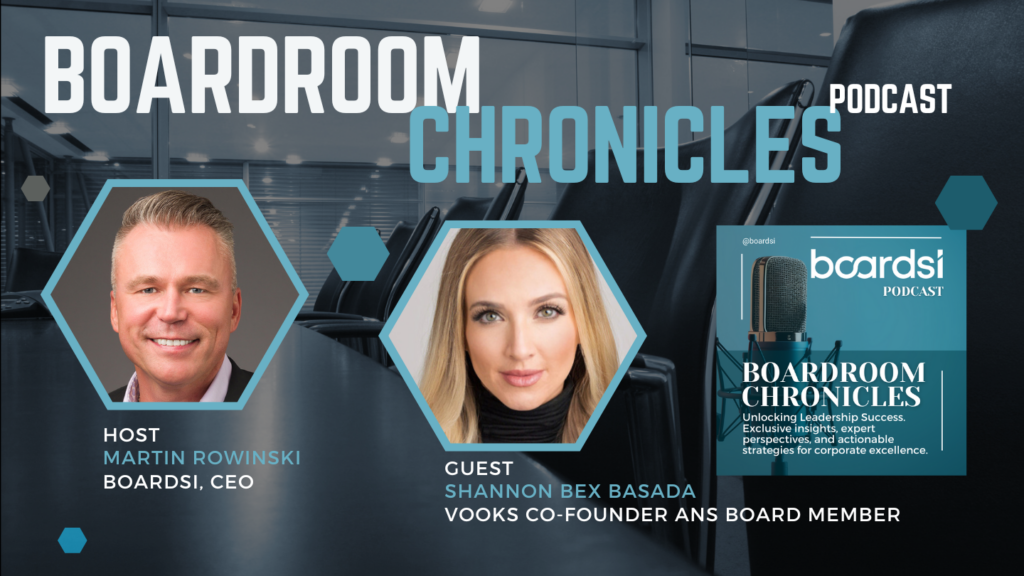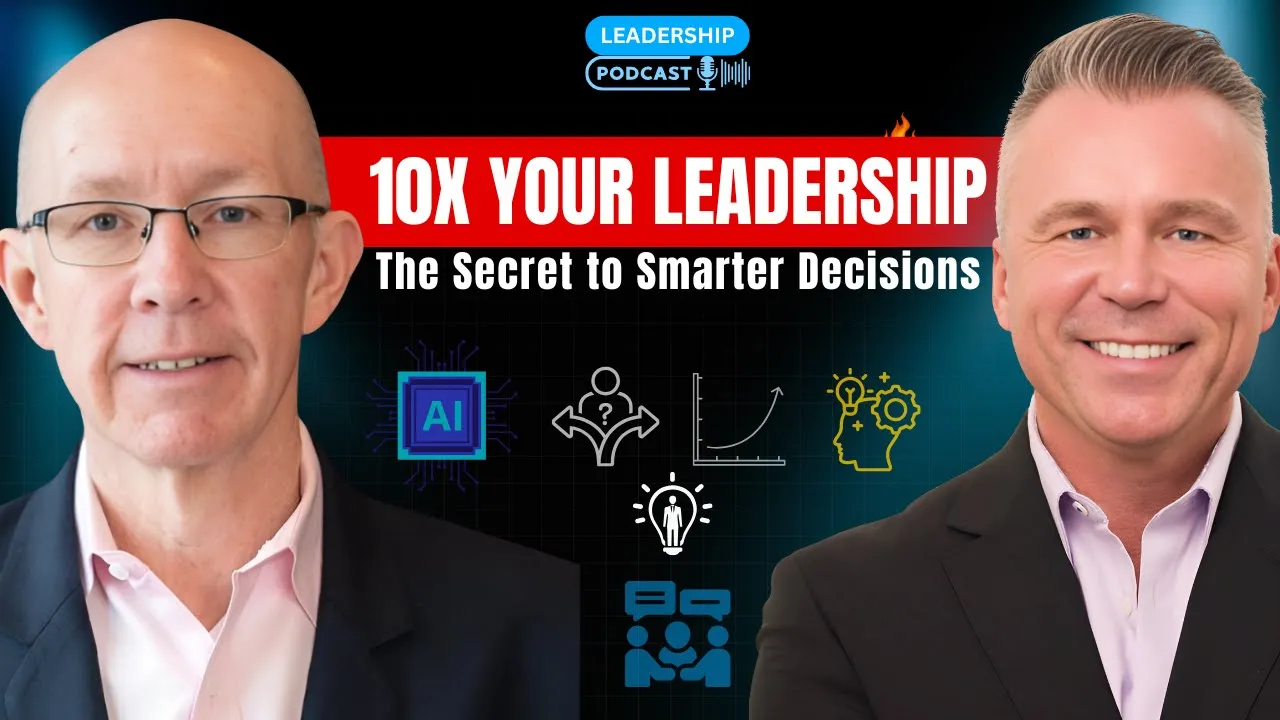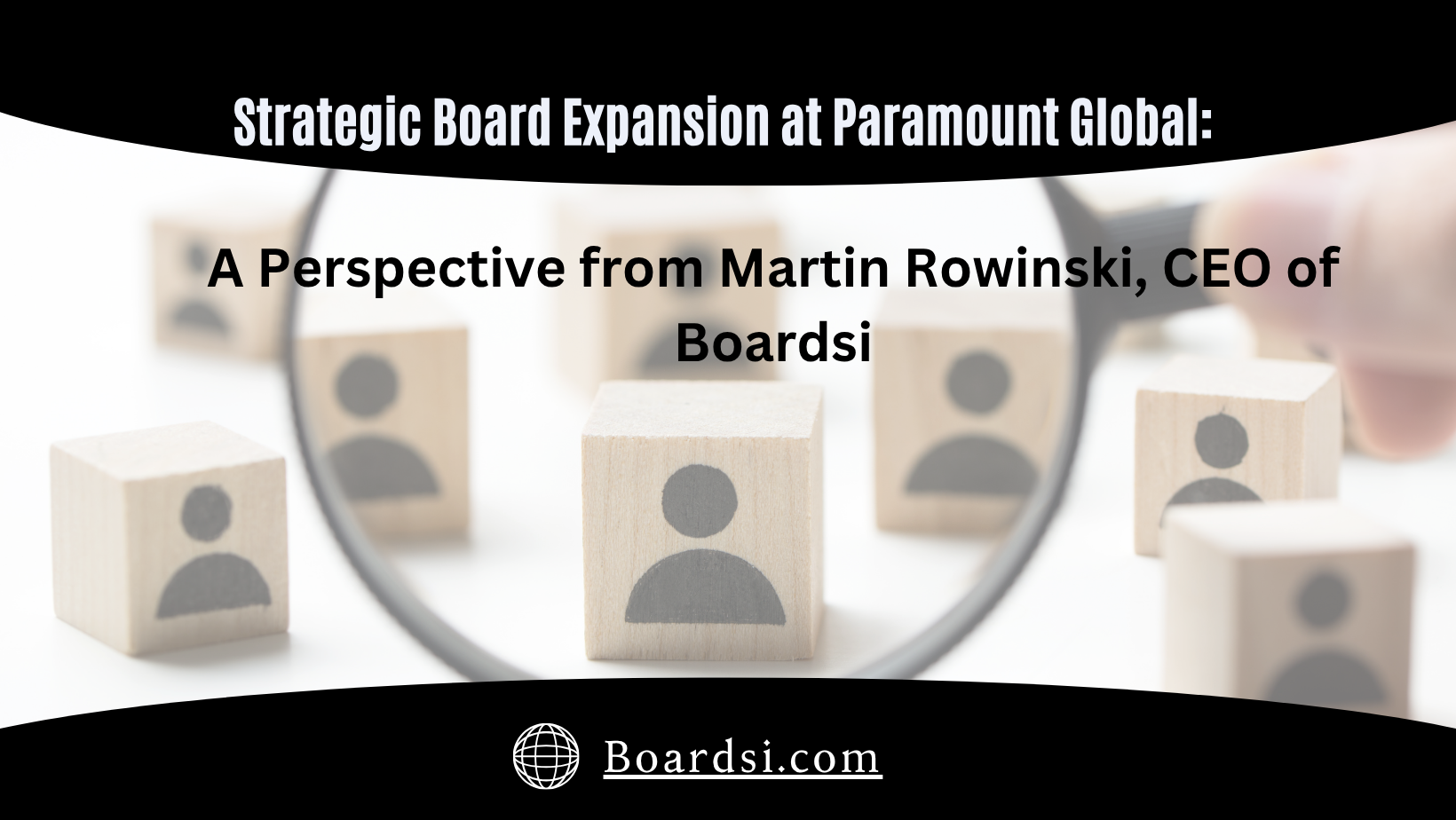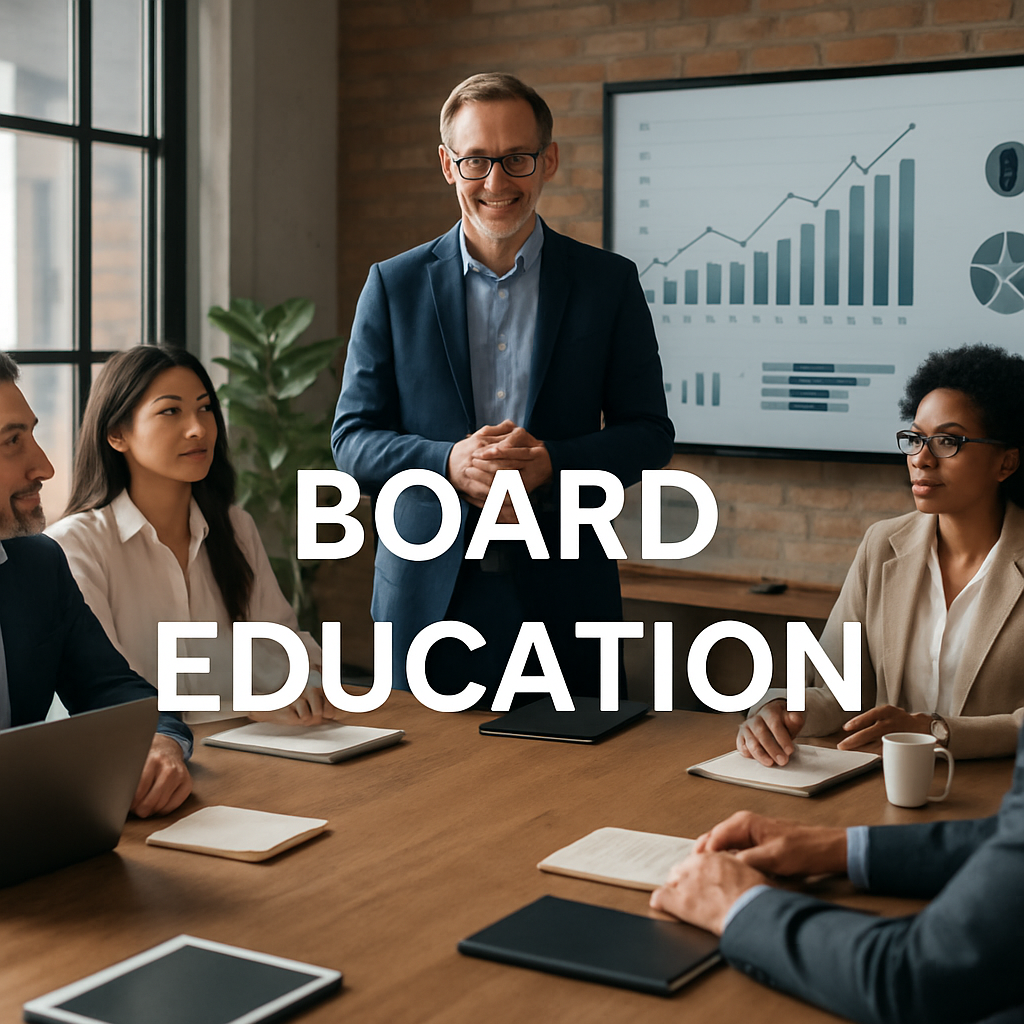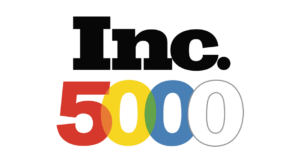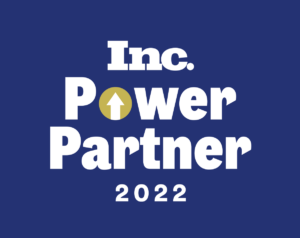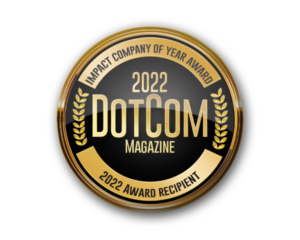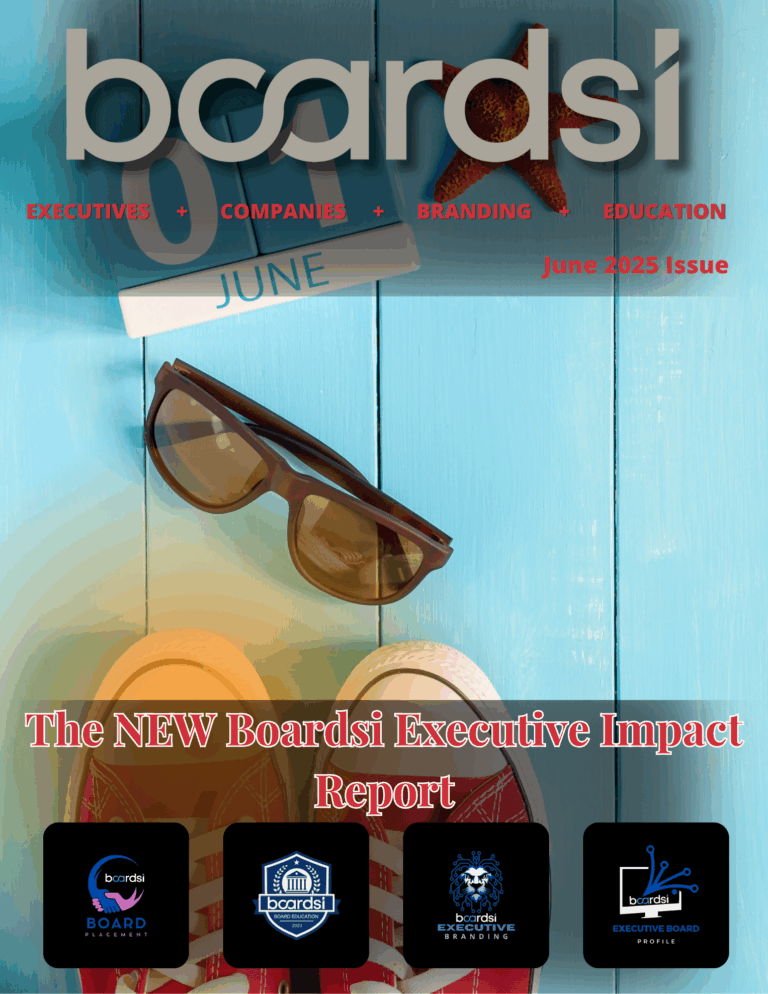Dive into an insightful exploration of how diversity, strategic communication, and digital innovation can revolutionize corporate governance in our latest episode of the Boardroom Chronicles. We are thrilled to feature Shannon Bex Basada, a trailblazer whose journey from a celebrated multi-platinum artist to a visionary co-founder of VOOKS, an animated storybook streaming service, exemplifies the transformative impact of adaptive leadership and creative strategies in today’s business world.
In this episode, Shannon Bex Basada unravels the layers of her multifaceted career, highlighting her achievements in marketing, branding, and digital media. Her narrative is a compelling showcase of how leveraging diversity, prioritizing effective communication, and embracing digital tools can propel corporate boards towards unparalleled success. Shannon’s insights are particularly valuable for professionals seeking to navigate the complexities of modern corporate governance with agility and foresight.
Listeners will gain an in-depth understanding of Shannon’s innovative approaches to enhancing board dynamics, the indispensable value of diversity in driving organizational growth, and the influence of her creative background on her leadership and strategic business perspectives. This episode is not just a conversation but a masterclass for board members, executives, and aspiring leaders aiming to harness the power of innovation and diversity in crafting a future-proof strategy for their organizations.
Tune into this enriching dialogue and empower yourself with actionable strategies and visionary insights that Shannon Bex Basada shares. Whether you are looking to elevate your leadership skills, understand the significance of digital innovation in the boardroom, or explore the benefits of a diverse corporate culture, this episode of the Boardroom Chronicles offers a wealth of knowledge and inspiration for transforming corporate governance in the digital age.
#CorporateGovernanceInnovation #ShannonBexBasada #LeadershipDiversity #DigitalBoardroomStrategies #EffectiveBoardCommunication #InnovativeLeadership #CorporateStrategy #BoardroomChroniclesPodcast #ExecutiveEmpowerment #DiversityAndInclusion #DigitalTransformationLeadership #StrategicBusinessInsights #MarketingAndBrandingExcellence #CreativeCorporateGovernance
- Clear and persuasive communication is critical in boardrooms as it fosters innovation, conflict resolution, and a culture where every voice is heard and valued.
- Enhancing boardroom interactions requires self-reflection, active listening, and creating an environment conducive to open dialogue.
- Diversity in boardrooms brings diverse perspectives, critical thinking, and outside-the-box strategies, leading to better decision-making and innovation.
- Implementing daily strategies such as note-taking on participation, mentorship, and creating a culture of healthy debate can improve communication dynamics in boardrooms.
- Success stories of diversity in boardrooms demonstrate the value of diverse perspectives in solving complex problems and driving breakthrough results. Diversity and inclusion are essential for creating dynamics and a robust culture in the boardroom.
- Strategies for ensuring diversity and inclusion include selecting the right candidates, giving them the opportunity to contribute and thrive, and integrating their unique perspectives into decision-making processes.
- Measuring the impact of inclusion on board effectiveness can be done by observing changes in energy and momentum, and tracking concrete evidence of how diverse board members contribute to solving company needs.
- Barriers to diversity and inclusion in the boardroom include lack of awareness, unconscious bias, resistance to change, and traditional recruitment practices.
- Boards should remain open to learning about new strategies and approaches to diversity and inclusion, and adapt their practices as societal expectations evolve.
Transcript:
Martin Rowinski (00:01.958)
Welcome to a special episode of the Boardroom Chronicles podcast titled Transforming Boardrooms Unleashing Communication and Diversity. Today, we’re joined by the incredible or incredibly talented Shannon Bex Basada whose eclectic career has spanned from being a multi-platinum recording artist with
Martin Rowinski (00:30.402)
digital content world as a co-founder and board member of VOOKS, a groundbreaking animated storybook streaming platform. Shannon’s journey is a testament to the power of creative, evolution, and strategic thinking. With her extensive experience in marketing, branding, and digital media, she has mastered the art of connecting with audiences and driving growth across various industries.
Beyond her business acumen, Shannon is a champion for diversity and effective communication within corporate boards, leveraging her unique insights to foster environments where innovation and collaboration thrive. Shannon, welcome to the show.
Martin Rowinski (01:23.895)
You’re still there, right?
Shannon Bex Basada (01:27.282)
Yes.
Martin Rowinski (01:27.646)
And you’re cutting out already. OK, they’re here. No problem. In this episode, Shannon will share her strategies for enhancing boardroom dynamics, the importance of embracing diversity for corporate success and how her artistic background has influenced her approach to business strategy and executive leadership. So, Shannon, before we get.
Shannon Bex Basada (01:30.258)
Uh oh.
Martin Rowinski (01:55.638)
Started and talking about boardrooms diversity communication Tell us a little bit about Shannon and your personal journey
Shannon Bex Basada (02:07.41)
Yeah, well, thank you for that great intro. I definitely agree. My background is not normal. It’s been very diverse in how I’ve gained my business and executive knowledge. I very much am a sponge, so all the unique environments I’ve been in, I’m very quick to observe and listen and try to understand the complexities, not just…
from the business side, the legal side, and how they all fit together. I’m very much a systems thinker, so I need to understand all of the parts to get the full picture. So, you know, like he said, I started in the music industry. I came right into music as a professional in my early 20s, so missed the college years and went right into my professional career. And…
Through that journey, I’ve picked up a lot of insights, a lot of dynamic experiences, that now as a board member and a co-founder and a consultant, I can speak to so many situations that kind of blows my mind sometimes of how parallel they really are. And I’m thankful I took the chance to, you know, embark on something that most might felt.
Martin Rowinski (03:21.553)
Ha ha ha.
Shannon Bex Basada (03:30.034)
like they weren’t qualified to embark on, but call it ignorance or just pure curiosity, but I just keep pushing down the path.
Martin Rowinski (03:41.086)
That’s the best way to success is just go for it and learn as you go. Just like you said, the B a sponge.
Always, always willing to learn.
Shannon Bex Basada (03:54.994)
Yeah, that’s the key point. You have to always be willing to learn and not, not, it’s challenging because I notice, not just in music, but even in my professional career, you know, you have a desire to have knowledge. You have desire to share wisdom in the room. And there’s a time for that, but there’s certainly a time to observe and listen and grow.
Martin Rowinski (04:18.85)
Absolutely. And speaking of growth and companies needing good board members, I think in today’s boardrooms, the power of communication cannot be overstated. It’s I mean, it’s the cornerstone of strategic decision making, conflict resolution, and also fostering the culture where every voice is heard and valued. So
To kind of kick things off, could you share your thoughts on why clear and persuasive communication is so critical in today’s boardrooms?
Shannon Bex Basada (04:52.946)
Absolutely. I mean, without clear communication, without inclusion of everyone’s voice, you start to silo innovative thinking. And sometimes the loudest voices in the rooms tend to drive the narrative. And the quiet ones, because everyone communicates different, that might not speak up or feel like they have a space to confidently say or challenge. Sometimes if a boardroom doesn’t set a precedence for healthy debate.
Um, it could minimize, uh, Constructive, uh, growth for, for the company they’re serving. I think, you know, we’re in such a unique time where not just board diversity and, and boards are changing, but companies are changing. We have more entrepreneurs and startups than ever before. And there’s so much at our fingertips that the board environments and the style of how they’ve always communicated has to change, has to adjust, has to evolve.
to support these companies. And it’s not personal agenda in the boardroom. It can’t be. It can’t be ego in the boardroom. It really is all of you serving a purpose for the greater good of the company that you’re representing.
Martin Rowinski (06:05.61)
Absolutely. And perhaps from your vast experience, could you offer our listeners some strategies on how to enhance boardroom interactions and create an environment conductive to open dialogue?
Shannon Bex Basada (06:23.026)
Yeah, I think self-reflection is huge. And a lot of these words sound maybe fluffy or not tactical, but you really have to be able to step back and take a look at how your board is functioning. And that’s for every member and actively see who is participating, who is not, what are the pain points that we just can’t seem to solve for and what is an out of the box way we can begin to solve for these pain points.
the company’s pain points. Self-reflection is the number one thing that is gonna serve you. And once you take the time to actually… Sorry. My Cattle Dog is a… He has to be in the room with you. He has to be heard. He’s not being a very good board member right now, just because he’s loud doesn’t mean I have to stop him.
Martin Rowinski (07:06.434)
That’s okay. Ha ha ha. Hi puppy. He has to be heard.
Martin Rowinski (07:20.307)
the
Shannon Bex Basada (07:21.906)
But she’s certainly the boss. My apologies. But yeah, so, I’ll take a step back. Ultimately, self-reflection, you have to- Hey bud, can we not?
Okay, sorry. So above all self-reflection and making sure that you care to have your board have the inclusion and all the voices heard. And that could just be something as simple as a tool like Grain where you can record your Zoom calls with each other and you can actually see a percentage bar of who is participating more than the other by how much they were speaking on the Grain. So there’s like little tools out there that can help you start to…
Martin Rowinski (07:39.735)
No worries.
Shannon Bex Basada (08:06.13)
take a step back and be like, oh wow, Bob is talking 75% of the time, and we need Gloria to chime in a little more. So there are some strategic tools that are non-biased out there that can help you observe, or even you could even take a board health poll with your team to see where everyone’s feeling heard or not heard or the different issues that people are feeling, because not everyone’s gonna speak out.
Martin Rowinski (08:34.302)
Yeah, no, I agree. And it’s funny because I had a talk with I didn’t have him on my show, but I had a talk with Mr. John Pepper, former chairman for PNG and Disney. And I asked him for one thing in the most effective board member. And he said the one that doesn’t speak much, but when they do, everyone listens.
Shannon Bex Basada (08:52.338)
Uh huh.
Shannon Bex Basada (09:03.634)
is so true.
Martin Rowinski (09:04.49)
So it’s not the 75% person, typically.
Shannon Bex Basada (09:08.466)
No, usually that person wants to hear themselves speak. So I absolutely agree. I tend to be the one that just is observant, listening to all the angles. I really try to find the win-win solutions and or have a healthy challenge if I don’t agree with the ideas being talked about. But I absolutely am the one to wait.
Martin Rowinski (09:13.083)
Yes. Yeah.
Shannon Bex Basada (09:33.97)
Usually to be asked, what are your thoughts? But the more I’m driving forward in my journey, my career, I’m like building that, I hate, you know, confidence, I guess, to just go ahead and speak out. And certainly the bored atmosphere that you create will allow those quiet thinkers and observers the space to participate. So that’s very important to be observant of the different personalities.
Martin Rowinski (10:00.842)
Absolutely. Considering your unique background and the transition from entertainment into the boardroom. So from stage to the boardroom, what specific communication strategies have you found most effective in bridging diverse perspectives and ensuring strategic decisions are made with clarity and consciousness?
Shannon Bex Basada (10:22.898)
Yeah. Ooh, that’s a good one. Boards, you know, usually startups, that is a mouthful. I think startups have a upper hand in the fact that they can cultivate the board and the foundation of the board and set the right precedent out the gate. And, you know, success there is,
Martin Rowinski (10:28.206)
That was a mouthful.
Martin Rowinski (10:32.244)
I’m sorry.
Shannon Bex Basada (10:47.858)
making sure everyone is fully informed, that there’s no imbalance of information being shared. You know, it’s kind of easy to silo side conversations or communicate more with someone who reminds you of yourself or you happen to already run in the same circle and that’s why maybe you’re on the board together. So actively being conscious of, you know, hey, I’ve talked to these three board members the last month, I haven’t even touched base with this board member. Like.
Active consciousness is what it comes down to and self-awareness is what it comes down to a little more challenging for the boards That are kind of set and set in their ways and in corporations and companies that have been around for 10 to 20 years And they’re just going kind of going through the motions of the status quo. So they don’t have as fresh of eyes on what is happening so Above all, it’s a conscious effort and then putting putting things in place like
making sure everyone has the agenda ahead of time of what is going to be covered so that everyone feels fully informed and aware of the topics and can be prepared. Not everyone is able to think on the spot or offer a comprehensive solution, especially if they haven’t been in some of the siloed conversations, they are gonna be very out of step with everyone and be intimidated potentially, and then that’s gonna break down trust. And then before you know it,
Martin Rowinski (11:56.77)
Yeah.
Shannon Bex Basada (12:11.794)
reclusive and they’re not participating. So make sure everyone has the right information. Everyone has it ahead of time. And even on your board meetings, the idea of like a neutral facilitator to make sure people are getting called on or asked for insight, even rotating who is leading the board meeting can also offer a chance for people to speak.
Martin Rowinski (12:39.89)
Yeah, I mean, I think the biggest key is be an effective board member and don’t just be there just because you got appointed to be a board member because quote unquote, you knew somebody like you said, running in the same circles. There’s got to be a reason that they’re there. So I agree.
Shannon Bex Basada (12:53.938)
Yeah.
Yeah. Yeah. And I think as you’re choosing your board, whether you’re a founder or it’s an investor, whatever the situation, making sure your candidate pipeline isn’t narrow and you’re really trying to, maybe it’s a, you know, a committee, a committee that can help, you know, with the diversity and gathering the right people. And you know, you know, obviously we don’t want diversity just for diversity’s sake. There’s a purpose behind it. And there’s a reason behind it.
There’s a value there. But then, I know we’ll probably get into this later, but it’s not just about popping down the diversity on your board, it’s also now including the diverse perspectives and communicating. So it’s multi-tiered.
Martin Rowinski (13:27.243)
Yes.
Martin Rowinski (13:39.443)
Yes.
Yeah, we’ll definitely dive into that. But you’re right. It’s not just about checking the boxes and having somebody that has diversity. But there are so many options out there. And as you know, what boards I does, I mean, we have a database full of executives, and diversity is definitely not an issue. And they’re qualified. And they’re out there. So yeah, don’t just check a box just to check a box, but actually find a diverse
board member that will be an effective asset to your board. I mean, that’s the key. That’s what we’ve been focused on for over seven years. So I totally get it. Is there a specific example where you can share an effective communication that significantly impacted the board’s decision making process?
Shannon Bex Basada (14:15.794)
I think sometimes hearing other use cases and success stories of boards and how they’ve implemented
Shannon Bex Basada (14:35.57)
Yeah, I mean, from my own personal experience, you know, my first time as a board member coming from the entertainment industry into a room of all men, amazing executives that have had successful careers, incredibly, potentially intimidating atmosphere. But because my board didn’t make it an intimidating atmosphere, and it was inclusive and
They cared about my voice and my opinion and they knew my background and my experience was adding value I could speak to things so one in particular, you know, I have a I have an interest in contracts and legal Negotiations and don’t ask me why but I like I said, I like knowing all the puzzle pieces And so because of my experience I handled all the licensing with um with our clients, uh, because we did
streaming rights for children’s storybooks. And in particular, you know, when we would start talking about like a new feature sets or a new initiative that got everybody very excited and you know, the buzz goes and the creative goes and which is totally my wheelhouse, but I was able to step in and speak up and put a buffer and guide rails on our conversations with a legal lens, like, hey, that’s great, but let’s think about.
XYZ for our customers experience with this new initiative based off of like legal implications. Let’s also make sure we’re thinking about our current contracts and deals and licensing deals with our business partners so that we’re not overstepping anything. So by being heard and being able to do that, we could still run with the creative vision, but we now had the proper guide rails in place to build that vision on the right stage.
Martin Rowinski (16:27.786)
Yeah, that’s awesome. And it’s good to hear that obviously you didn’t just come in there without having the knowledge to back up your voice. But like you said, you were strong in that. And it’s good to hear that they were open minded and actually inclusive. So that’s for the best for everybody.
Shannon Bex Basada (16:46.962)
Absolutely.
Martin Rowinski (16:53.394)
So in an article that I wrote about communication, and this was probably last year, I broke it down. It was, I mean, communication, we can spend probably six hours talking about it, but I really broke it down into six days or six day, ended up being six weeks because I released the article one per week, but I broke it down into focusing on each part like effective boardroom communication.
Shannon Bex Basada (17:04.114)
Thank you.
Martin Rowinski (17:20.47)
begins by establishing a strong foundation, building trust, respect and shared purpose, and then common obstacles and it goes on and on. And I’ll leave a link to the article or articles at the end of this for the specific strategies that I wrote about. But to question or to send a question your way, how can boards implement these
daily strategies to improve their communication dynamics. And I think you had a look at the article, I hope.
Shannon Bex Basada (17:56.146)
Yes, yeah, absolutely.
Again, it’s going to be a willingness to want to make these steps and strategies happen. And I think, you know, there’s some tactical things, like I mentioned before, making sure you’re taking note of the participation of the board members. You know, I think for the senior leadership that are on boards, and if you have more of a newcomer or younger executive, the mentorship that you can do. And, you know, when I walked in as a new board
Nobody sat me down and said, these are the rules of the board member and this is like what to expect. I mean, I knew like the common stuff, but nothing of the dynamics of how I could integrate myself. And again, because I had a, I feel good board experience, it didn’t matter, but you know, there’s, I think there’s a important role for seasoned board members to kind of mentor, bring along, maybe even reach out like, hey, I noticed you’re not really chiming in on this.
idea or subject, like, you know, run some things by me. Like it really is communication. It really is the human factor. I think sometimes with businesses, we have their KPIs or OKRs or deliverables, or it’s so sterile, but the human element of participation and trust is going to go such a long way and ideally you’ll create a board atmosphere where you can have debate because healthy debate is going to lead to innovation and to
Martin Rowinski (19:28.511)
Yes.
Shannon Bex Basada (19:28.85)
to level up your board to where you’re not uncomfortable having tough conversations, I think it’s masterful. And I still don’t know how to get there, but it’s possible, it’s a team to me. It’s a basketball team, it’s a football team. It’s not a family, it’s a team, and everyone has a role and a strength. And so I think, yeah, if you can really drop the egos and drive finding the value of the…
Martin Rowinski (19:41.399)
Hehehe
Shannon Bex Basada (19:57.042)
voices that sit beside you, that’s the first step.
Martin Rowinski (20:02.766)
That’s awesome. And in your in your experience from entertainment industry to now obviously being on a board. Over time, have you found any specific tools or maybe just something that you do that is helping you maintain the discipline?
Shannon Bex Basada (20:25.458)
Yeah, it’s funny because again, you wouldn’t think there’d be as many parallels to the industry as in as the artist to a boardroom, but really the common factor is dynamic personalities, dynamic skill sets. And for me as an observer, the most success comes and has come when everyone is empowered.
by their unique skill sets. And success before this executive career was about listening. It was not about being heard. It was about the greater good of the vision and the outcome and everyone knowing they’re leaving their initiative at the door because we all have a common goal. So constant realignment.
And I’m not talking about robotic. We read this mission and vision at every board meeting and now we’re so tired of it. Truly passionate. Like, yeah, like this fires me up. We are here because this fires me up and my unique skillset can help drive change and progress. So constantly identifying. And sometimes the very thing that frustrates you about another person is the very thing you need to have implemented in the.
Martin Rowinski (21:27.362)
Hehehe
Shannon Bex Basada (21:50.898)
in the strategy for success. So celebrating, celebrating the uniqueness and the beauty of everyone.
Martin Rowinski (21:59.094)
That’s awesome. And to back that up, take ownership. Don’t just like you said, don’t just read it. Take ownership. Be there. Be the be the force, right? That drives it. Absolutely. Let’s let’s jump into diversity a little bit. I talk a lot about it in my book. I’ve written articles over and over about it. And I truly believe that diversity brings innovation, creativity.
Shannon Bex Basada (22:06.898)
Yeah.
Yes.
Martin Rowinski (22:27.446)
and actually better decision making. In your experience, how does diversity within a board change that conversation and the outcomes?
Shannon Bex Basada (22:38.322)
Oh my goodness. I mean, if everyone came from the same path of life, everyone went to the same school, everyone had the same rhythm, same routine, brushed their teeth at the same time every day, you’re pretty much just cloning the same group think. And that is what diversity can help change. It offers critical thinking. It offers outside, out of the box.
strategy that, you know, because someone’s experience, my experience going to the grocery store is completely different than your experience going to the grocery store. And if we’re serving a customer that needs to serve a grocery store, you and I shouldn’t be living in the same neighborhood and having the same commute to the same grocery store. Like the fact that we even live in different states and have a different way about the way we get to the grocery store is a diverse approach to a problem. So
Right there, that opens up a world of opportunity and solutioning.
Martin Rowinski (23:41.666)
Yeah, my grocery store has a slot machines. I don’t think you have that do you
Shannon Bex Basada (23:46.002)
Mine definitely doesn’t have slot machines and mine doesn’t have hard liquor. So you can get wine but so there you go already. Different.
Martin Rowinski (23:51.806)
Oh Yeah
Martin Rowinski (23:55.85)
Yeah, so different. Yep, absolutely. Is there any specific success story where diversity in a boardroom led to a breakthrough result personally that you can share?
Shannon Bex Basada (24:11.25)
Yeah, so because of my unique background and the music industry and coming into the type of product we were serving, you know, if my board wasn’t open to me participating with my unique experiences, I don’t think we would have solved for a very interesting problem. So because my past, I
witnessed the physical CD sales going away and streaming becoming the only really form of digesting music. So I witnessed the music industry shifting. I witnessed the agreements, changing terms, creating new terms to fit the new landscape, morphing the definition of terms just to solution for the changing landscape. And with book publishing,
You know, as we walked into getting these digital licensing rights from publishers, they’re very set in their traditional terms, rightfully so. And it was very specific. They had terms allocated to publisher, terms allocated possibly to creatives, terms allocated to agents. And we were here asking for specific rights that they couldn’t give us because they’ve already allocated these terms. So we had to.
because of my music career, because of understanding the way the music industry shifted their terms and licensing agreements, we were able to lean in on my experience and discover and carve out a new right that publishers and rights holders could get behind and actually give us the rights to, because we were able to be innovative with how we approached it. And because of my diverse background and my experiences, that’s how we were able to formulate a new right and get over 400.
plus licensing agreements.
Martin Rowinski (26:06.963)
That’s awesome. So diversity and inclusion always get bunched in together like they’re one. And I mean, I truly believe they’re complementary, but there is a distinct concept and essential for creating dynamics and robust culture. But diversity obviously refers to the presence of differences within a given setting.
Shannon Bex Basada (26:15.154)
Yeah.
Martin Rowinski (26:32.094)
encompassing various dimensions such as race, gender, age, religion, disability, sexual orientation, and among others. It’s about bringing together rich tapestry of people with different backgrounds, experiences and perspectives. Inclusion, on the other hand, is the practice of ensuring that these diverse voices are heard, valued and given the opportunity to contribute and thrive. So.
There is a obviously difference, but they work together in a very, very powerful way. What strategies can boards use to ensure they’re not just diverse, but also inclusive?
Shannon Bex Basada (27:17.042)
Hmm. Yeah. I think some… Oh, you’re really challenging me. I’m just kidding. I think, first of all, for some reason, diversity, I think scares some organizations. The term, and inclusion, it’s become almost, I think, a fearful…
Martin Rowinski (27:19.394)
That is a mouthful I know, again.
Shannon Bex Basada (27:45.202)
new terrain because this is not normal. We are changing the environment of how businesses function is different than it was 20 years ago. So the unknown is always scary. So things like this in this podcast are amazing because people can understand, oh, I don’t have to be afraid of this. I can understand how this will benefit the company I serve, but also bring in dynamic voices that don’t always have the opportunity to be heard. So hands down, that’s important.
Martin Rowinski (28:11.892)
Yes.
Shannon Bex Basada (28:14.898)
But, you know, once you do select the right candidate, the right diverse fit for the company you serve, you know, including their voice, it’s not just about, what do you think? It’s not just about getting them to speak more. It’s, if you brought them in because of their skillset and their unique perspective that they’ll bring to that company.
you’ll be able to get more strategic and actually dive in with them on, okay, here’s our pain point. Here is what we’re trying to do. This is the market we’re trying to expand in and we really feel your skill set can offer us a whole new lens that we’ve never really explored before. What is that? Like you can’t even ask questions that you don’t know. So allowing, allowing them room to why are they there?
Why do they feel passionate about the vision and mission that you’re already aligned with? You’re already gonna be aligned on why you’re there. So let them speak. Let that first board meeting, it’s not just a hi, meet so and so, they come from this background and this is why they’re here. No, like let them speak to why the mission and vision is unique and how they would like to solve some of the pain points and problems that they see or that have been brought to them. I just.
Don’t be afraid to just, yeah, go deep. You have to go deep and you have to let them speak deeply.
Martin Rowinski (29:48.242)
Absolutely. I mean, that’s the reason they were brought on. Let them speak freely to not and take what they say as a positive, because they might be coming from I mean, diversity, like I said, comes from different angles. I mean, I grew up in a communist country and. You know, I know I don’t look like a diverse person per se, but I bring a lot of different culture, diversity into.
Shannon Bex Basada (30:01.714)
Yes.
Martin Rowinski (30:17.29)
a lot of different environments and I’ve done it for many years as a consultant and changed the impact of a company. So if you’re heard. Yeah. And if that’s put into an actual, you know, into that company, it’s great. It can be great. But it brings up the next question on how do we measure the impact of inclusion on a board effectiveness?
Shannon Bex Basada (30:17.682)
Yeah.
Shannon Bex Basada (30:25.522)
That’s huge.
Shannon Bex Basada (30:43.41)
That’s challenging. I think there’s going to be an initial, I mean, energy is palatable. There’s gonna be an obvious shift in your energy if you start hitting momentum when diversity and inclusion of all voices starts to be implemented in your board. So you should within a few meetings, within a few weeks, depending on how often you meet,
Martin Rowinski (30:46.359)
Yeah.
Shannon Bex Basada (31:12.21)
start sensing like momentum. You probably were stalled, you probably were paused, you probably were status quo. And when you interject diversity and inclusion, you should start feeling a momentum and an energy and people should be getting excited and passionate because you’re unlocking things that you’ve never unlocked before. A way to now, you know, put it on paper before you integrate diversity and inclusion, before you really make that conscious decision to do that.
Make notes of where things are at, not only with the board and the board style of how they make decisions and communicate, even down to who talks the most, whatever it might be, down to even the company’s initiatives and the different issues you’re trying to solve for. Make notes, concrete note of that. So once you fill that energy build with your diversity and inclusion, check back three months, six months, a year to see hard.
evidence of how that person coming in, those people coming in, have helped you not only change the dynamics of the boardroom, but also help solve for maybe some of the company’s needs.
Martin Rowinski (32:23.538)
Yeah, no, absolutely. I think definitely checking back and seeing where you’re at and, you know, like you talked about earlier doing surveys and self awareness would probably help out a lot too. Obviously, we have
Shannon Bex Basada (32:35.442)
Yeah.
Shannon Bex Basada (32:40.274)
And I hear, oh, I was gonna laugh real quick and say, I can hear some moans and groans around, oh, polls. I don’t have time for that. Or training around bias. Seriously, we gotta get some business done. And I hear the moans and I totally relate and I understand. But it’s injecting that value now will be worth it. Trust me, it’ll be worth it to the bottom line.
Martin Rowinski (32:44.138)
No, no, go ahead.
Martin Rowinski (33:09.974)
Exactly. And overcoming challenges to diversity and inclusion, what do you think are some of the most significant barriers to diversity and inclusion in boardroom today?
Shannon Bex Basada (33:25.842)
Hmm. I kind of touched on this. I think sometimes it can stem from from just lack of awareness of why a company might want to think about, you know, having a diverse board or how that can, like I said, sometimes it’s all about those ROI and KPIs and all that stuff. So if you can give a tangible use case of how to look at diversity and inclusion on your board and how that can help
company’s success, oh, okay, light bulb, you know, moment. I think another challenge is unconscious bias. I think it’s not always malicious that people are biased. They just, sometimes there’s just an ingrained way about them and they didn’t realize, because no one shed light on it, that the way they’re thinking is actually limiting and hindering. So that self-awareness, just to know, just because it’s done this way doesn’t mean it should be done this way.
So self-reflection, I think that can be hindrance. And then sometimes just the companies themselves or corporations themselves, maybe even being apprehensive of what does that mean, having diversity. So really it’s education and doing exactly what you’re doing now and talking about it. I get it. Yeah. And you know, it might not be broke now for you and your company and your board yet.
Martin Rowinski (34:36.534)
Resistance to change. Yeah, resistance to change is a big one.
Shannon Bex Basada (34:47.889)
but you gotta have that long-term vision. You can’t just be quarterly focused. You gotta look five years from now and if you don’t participate or have your board participate in diverse, you know, board members, what does that look like in five years? Like that roadmap and is that gonna hinder, you know, your profitability?
Martin Rowinski (35:08.894)
Absolutely. I think another one is to that we have found is recruitment practices, traditional recruitment methods and networks are limiting their access to the diverse pool. So I mean, again, another reason boards I was born was to have that access. Yeah.
Shannon Bex Basada (35:18.418)
Yeah.
Shannon Bex Basada (35:24.274)
Yeah, absolutely. Yeah, I get it. Yeah, and I get it. I totally understand, you know, when a job opportunity happens or you go to people you trust, you go to people you know, you go to people who have that track record or that common resume for a board member. So I get that. But if you can be aware that there’s other opportunities to discover.
Martin Rowinski (35:33.582)
Come here.
Shannon Bex Basada (35:54.162)
new board members and diverse board members, then pursue it. Don’t limit yourself.
Martin Rowinski (36:00.306)
Absolutely. And I think boards also should remain open to learning about new strategies and approaches to diversity and inclusion, adapting their practices as societal expectations evolve. Because I mean, we’ve been evolving for a very long time and now faster than ever.
Shannon Bex Basada (36:15.826)
Hmm. Absolutely. Oh, it’s ridiculous. Like, that’s just insane. Game changer. And you know, you can’t resist the change because it’s inevitable. So how can you learn from it, grow with it, but not be controlled by it? So it’s a very interesting balancing act.
Martin Rowinski (36:21.166)
I mean, AI, AI is a game changer.
Martin Rowinski (36:28.091)
Yeah.
Martin Rowinski (36:41.054)
Awesome. Before I change gears and get into something fun to wrap this up, is there anything else you wanna add?
Shannon Bex Basada (36:48.498)
I got gone, this is fun. This is great.
Martin Rowinski (36:53.113)
No, this is going to be really fun. These are fun personal questions.
Shannon Bex Basada (36:57.042)
Okay, good. I like it.
Martin Rowinski (36:59.618)
So anything else about board rooms you want to add to this?
Shannon Bex Basada (37:05.362)
First of all, thank you again for having a platform for someone like me with such a unique and not common background who’s on boards and an executive to speak to. Sometimes we need to see those that are like us to know the opportunities are out there. And I just encourage anyone who’s come across this who is…
you know, new in their careers to keep pushing forward and just build your knowledge and you have value and you’ll bring value. Encourage those board members who are curious about how to improve their board. First of all, if you’re here, you wanna improve your board and bravo to you. It might feel intimidating. It might feel intimidating, but the first step is just observe. Fact you’re even here, you’re caring to change. So now just take this back and observe your board.
Martin Rowinski (37:43.534)
Ha ha.
Shannon Bex Basada (37:57.01)
And then it can be very simple first steps of just starting the conversation.
Martin Rowinski (38:05.534)
Awesome. Thank you. And are you ready for these tough questions?
Shannon Bex Basada (38:09.81)
Okay, I think so.
Martin Rowinski (38:12.202)
All right, if you could have any musician or band, past or present, play live at your next birthday party that I’m hoping to be invited to, who would it be and why?
Shannon Bex Basada (38:25.874)
You are right. I absolutely have this answer. Garth Brooks. I have always been, I’m a country girl and I’ve always been a Garth Brooks fan, mainly because he’s an incredible performer and he leaves his heart out on that stage every time. And he’s just phenomenal. So I thoroughly enjoy.
Martin Rowinski (38:31.65)
Wow.
Shannon Bex Basada (38:52.562)
his performance ability and Yeah, the songs his songs are pretty good to you. So Garth Brooks easy boom next
Martin Rowinski (38:59.386)
Alright. So we gotta get Garth on your next birthday party. Alright, got it.
Shannon Bex Basada (39:05.106)
That’s right, here we are. What’s up? I hope you’re watching. Ha ha ha.
Martin Rowinski (39:09.042)
All right. Now imagine you’re given an unlimited budget to produce a movie about any event in history or fiction. What story would you choose to bring to the screen and who would star in it?
Shannon Bex Basada (39:24.978)
Oh my gosh, this is really good, but you can’t ask me that. Who?
Martin Rowinski (39:29.943)
haha
Shannon Bex Basada (39:33.97)
Oh my gosh, this is a hard one. Thanks, Martin. Okay. Are you okay? Good, good, okay. I was hoping you’d say that. Okay, anyone in history who has, okay. I got this, I got this. Give me a second.
Martin Rowinski (39:38.078)
I’m available to star in it if it’s a good story, just kidding.
Shannon Bex Basada (39:58.802)
Okay, I love a podcast called The History Chicks. I have a hard time just entertaining myself without learning something. So it’s a way I can be entertained but then learn something. The Unsinkable Molly Brown, she sounds like such a firecracker and she had such, from what I know, a diverse background. She came from…
a background and then ended in a society and in a ranking that you’re like, how did that even happen? So her journey, I think, will be really interesting to unpack. And she obviously, from what I’ve heard, has had so much heart and spunk and grit. And I would love to learn from that. So I think the unthinkable Molly Brown would be somebody I’d like to know more about. And who would star in it? Hmm.
Well, the only person that I think could deliver a role like that is Kate Winslet. And it’s funny that she was in Titanic and Unsinkable Molly Brown was in Titanic, but, but, but Kate is such an amazing actress or Emma Stone, actually. That would be another one. Emma Stone to star. Yeah. I mean, I don’t know their availability.
Martin Rowinski (41:00.45)
Ha ha ha!
Martin Rowinski (41:12.502)
So you got options. All right, now we got to work on the budget. All right, if you could instantly gain mastery in a new skill, just one, or a hobby that you’ve never tried before, what would it be and why?
Shannon Bex Basada (41:27.506)
Thank you.
Shannon Bex Basada (41:33.65)
I can only pick one. Piano. I would, I’ve always wanted to learn. I’ve taken a few lessons, but oh, if I could just sit at a piano and just play, it doesn’t even have to be for anybody. It would be my own therapy. Yeah, what a great skill.
Martin Rowinski (41:36.15)
Just one.
Martin Rowinski (41:56.018)
Yeah, I’m right there with you on that one. I have zero music skills, like none. I don’t even think AI could help me sing.
Shannon Bex Basada (42:01.362)
We’ll work on that. Well, I know, it’s gonna try, but yeah.
Martin Rowinski (42:10.355)
At least you had that going. I don’t even have that. All right. Last one. Not sure if you like karaoke or not, but if you were with a group of close friends, what is your go-to karaoke song?
Shannon Bex Basada (42:13.682)
Yes.
Shannon Bex Basada (42:18.77)
Okay.
No.
Shannon Bex Basada (42:30.482)
I actually have an actual story of this moment. No, I do not like karaoke. For some reason as a multi-platinum recording artist, people have high expectations of you and karaoke is not that easy. It’s kind of like that dance dance revolution machine, arcade machine where you had to like jump on the square and then jump, jump, jump, and like hit the marks as a dancer. Not dance.
Not dance, not interesting. Um, but yes. My go-to, I was actually with my husband and a bunch of work colleagues. And we were at a karaoke bar and they were like, can you sing? I’m like, no. Please? No. Sure enough, they put my name on the list. So, my go-to? Proud Mary. Tina Turner.
Martin Rowinski (43:00.194)
Hehehe
Martin Rowinski (43:19.326)
Uh, wow. Love to hear that. That’s a not an easy song.
Shannon Bex Basada (43:23.698)
So when Garth comes, we’ll have him play Proud Mary and then you’ll get to see me sing it. That’s my karaoke with Garth and then maybe we’ll get him to teach us guitar at least, if not piano. So Garth has a long list. I like it.
Martin Rowinski (43:37.525)
Oh, there you go.
I love the goals. Now we got to get to work on it.
Shannon Bex Basada (43:46.61)
I’m ambitious, if you can’t tell.
Martin Rowinski (43:50.518)
Yeah, me too.
I’m gonna try to figure out how to get hold of Garth now. Awesome, Shannon. Shannon, I can’t thank you enough. This was awesome, incredible. Great opportunity to have you on the show. Great opportunity to meet with you. And I do look forward to meeting you in person. So I know that’s gonna happen. Hopefully you and your husband and we can hang out, have a glass of wine and just relax and have a good laugh.
Shannon Bex Basada (43:56.85)
All right, I like it.
Shannon Bex Basada (44:12.338)
Thank you.
Shannon Bex Basada (44:24.242)
That sounds amazing. I love it.
Martin Rowinski (44:27.206)
Awesome. Well, thank you everybody for joining us on Boredom Chronicles and until next time.

